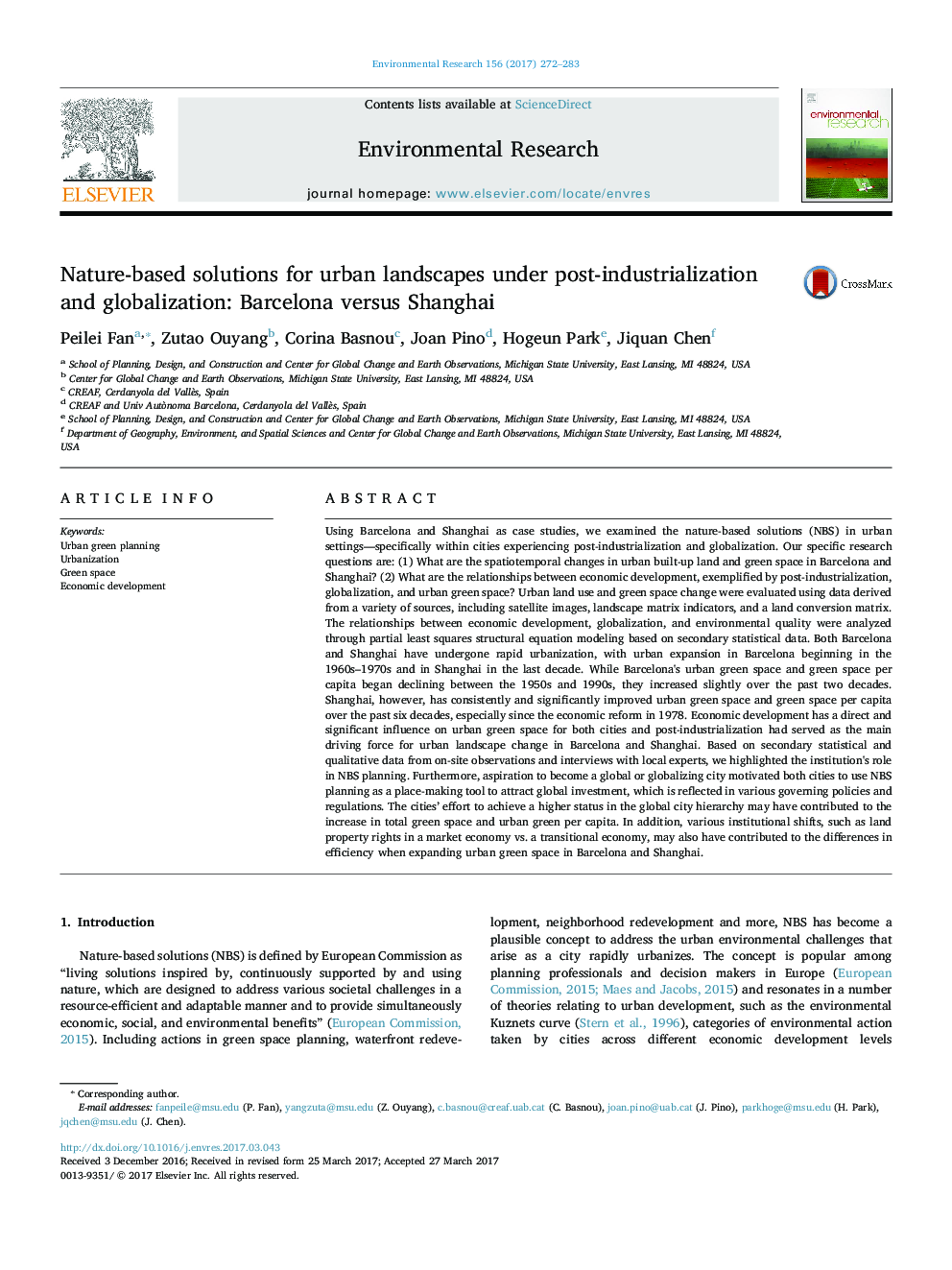| کد مقاله | کد نشریه | سال انتشار | مقاله انگلیسی | نسخه تمام متن |
|---|---|---|---|---|
| 5756538 | 1622547 | 2017 | 12 صفحه PDF | دانلود رایگان |
عنوان انگلیسی مقاله ISI
Nature-based solutions for urban landscapes under post-industrialization and globalization: Barcelona versus Shanghai
ترجمه فارسی عنوان
راهکارهای مبتنی بر طبیعت برای مناظر شهری تحت توسعه صنعتی و جهانی سازی: بارسلونا در مقابل شانگهای
دانلود مقاله + سفارش ترجمه
دانلود مقاله ISI انگلیسی
رایگان برای ایرانیان
کلمات کلیدی
برنامه ریزی شهری سبز شهرنشینی، فضای سبز، توسعه اقتصادی،
موضوعات مرتبط
علوم زیستی و بیوفناوری
علوم محیط زیست
بهداشت، سم شناسی و جهش زایی
چکیده انگلیسی
Using Barcelona and Shanghai as case studies, we examined the nature-based solutions (NBS) in urban settings-specifically within cities experiencing post-industrialization and globalization. Our specific research questions are: (1) What are the spatiotemporal changes in urban built-up land and green space in Barcelona and Shanghai? (2) What are the relationships between economic development, exemplified by post-industrialization, globalization, and urban green space? Urban land use and green space change were evaluated using data derived from a variety of sources, including satellite images, landscape matrix indicators, and a land conversion matrix. The relationships between economic development, globalization, and environmental quality were analyzed through partial least squares structural equation modeling based on secondary statistical data. Both Barcelona and Shanghai have undergone rapid urbanization, with urban expansion in Barcelona beginning in the 1960s-1970s and in Shanghai in the last decade. While Barcelona's urban green space and green space per capita began declining between the 1950s and 1990s, they increased slightly over the past two decades. Shanghai, however, has consistently and significantly improved urban green space and green space per capita over the past six decades, especially since the economic reform in 1978. Economic development has a direct and significant influence on urban green space for both cities and post-industrialization had served as the main driving force for urban landscape change in Barcelona and Shanghai. Based on secondary statistical and qualitative data from on-site observations and interviews with local experts, we highlighted the institution's role in NBS planning. Furthermore, aspiration to become a global or globalizing city motivated both cities to use NBS planning as a place-making tool to attract global investment, which is reflected in various governing policies and regulations. The cities' effort to achieve a higher status in the global city hierarchy may have contributed to the increase in total green space and urban green per capita. In addition, various institutional shifts, such as land property rights in a market economy vs. a transitional economy, may also have contributed to the differences in efficiency when expanding urban green space in Barcelona and Shanghai.
ناشر
Database: Elsevier - ScienceDirect (ساینس دایرکت)
Journal: Environmental Research - Volume 156, July 2017, Pages 272-283
Journal: Environmental Research - Volume 156, July 2017, Pages 272-283
نویسندگان
Peilei Fan, Zutao Ouyang, Corina Basnou, Joan Pino, Hogeun Park, Jiquan Chen,
